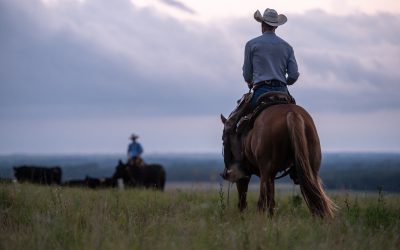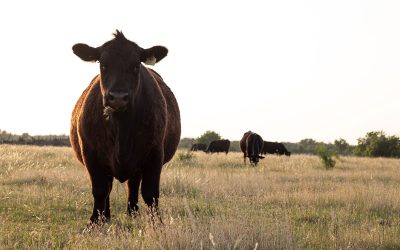
Ranchers and chefs have a common customer
November 3, 2011
I live in central Nebraska. Although I love this place—and many of our local restaurants—you don’t have to tell me how far I am from five-star resorts or fancy cuisine. (After all, I am about halfway between Denver and Omaha.)
But yesterday I was lucky enough to have them come to me. Okay, not just for me, but since I was in the area I got to tag along.
You see, just down the road from my cozy home office is Eagle Hills Ranch. Brothers Shane and Todd Geiken run the cattle enterprise of the family’s agriculture business and they’ve been building up the cowherd, both in quantity and quality, since returning from college at the University of Nebraska.

So what do these fantastic producer “neighbors” have to do with five-star resorts? Well, a few chefs and foodservice distributors who sell to the upscale accounts flew out to Omaha and then made the trek down I-80 to visit a feedlot, packing plant and eventually Eagle Hills Ranch.
The beef end-users wanted to know how it’s done in cattle country and the Geikens were just the people to show them. (They calve about 1,500 momma cows each year.)
It started with lunch catered by Uncle Ed’s, which was a real treat and much preferable to the leftovers I usually grab from my fridge.
Then we headed out to the calving and weaning facilities. (Since it was a windy, rainy day we made great use of those facilities,too.) There Todd and Shane told us about their management. They may have had to explain a few terms like AI and EID,but I think the main point was conveyed. They know what they’re doing and there’s a reason for why they do it. And they care.
Even though they sell weaned calves to feedlots, they’re very interested in the end product that they’re raising: beef. They know: the higher the quality, the better for the industry. And as Todd noted, “We like our steaks as good as anybody else.”

Pretty simple, but powerful philosophy. They know what they like and it turns out that, at least in terms of taste buds, a consumer in central Nebraska isn’t so different from the clientele at a destination resort in North Carolina.

Today I’m back in the office, but glad I got to observe this connection taking place. Since the group was busy learning from the experts–Todd and Shane–I didn’t get to spend much time recording their reactions to all this info. They’re traveling home today, but I plan to call a few of them to chat, so you can expect an update from their perspective sometime on down the road.
Until then, may your bottom line be filled with black ink,
~Miranda
You may also like
Progress from small steps
Every day is a chance to learn and get better. Thousands of others like my new friends in Alabama are taking steps to meet the shifts in consumer demand, and to know more. Small steps in the right direction can start now. Even if it’s just recording a snapshot of where you are today, a benchmark for tomorrow.
Not perfect, but working to get better
The CAB Cattleman Connection team heard its name called more than once in the virtual ceremonies, and each time came a sense of personal accomplishment, but even better: confirmation that we’re getting better at our craft. I hope that means we’re doing a better job for you.
Beefed up findings
Frank Mitloehner presents his findings on the animal ag sector’s impact on global warming. He explains how cattle counterbalance other fossil fuel sectors, proving that cattle are a solution and not a threat.



